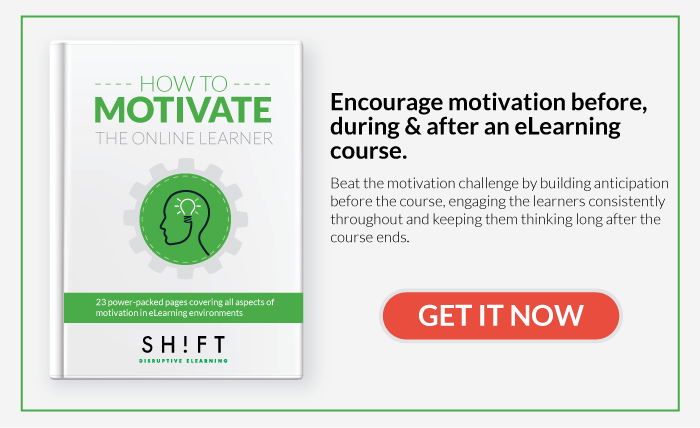Picture this: You've invested countless hours in creating a brilliant, engaging eLearning course. It's chock full of relevant information, interesting modules, and interactive quizzes. You've done your part, but there's one question that haunts you as you stare at your masterpiece: "Will my learners remember any of this a month from now?"
It's a fair question. After all, the true measure of successful training is not just the initial understanding, but also the longevity of the knowledge imparted.
So, how do we ensure that the valuable information you're providing sticks in the minds of your workforce long after they've logged off the learning platform?
Understanding how human memory works is pivotal in this quest. But to truly elevate your eLearning strategies, we need to delve into the ways that can help learners not only acquire but also retain new knowledge effectively. This pursuit leads us to six key premises that can transform your eLearning from a fleeting moment of instruction to a memorable learning journey.
Join us as we navigate the fascinating world of learning retention, tapping into cognitive science, cutting-edge research, and proven strategies to help your workforce remember what they've learned. For training leaders like you, this blog will be your guidebook, transforming the way you think about eLearning and its potential to empower your workforce in a whole new way.
Principle #1: The Usefulness Theory
Remember this: To truly grasp and remember new concepts, learners must be driven by motivation. This could be a burning passion for a subject or a practical need to acquire new skills to excel in their job.
So, which memories are most likely to take root? If you bet on those tied to personal significance, give yourself a high five. If the content fails to resonate with the learner’s experiences or interests, it becomes challenging to create those crucial mental connections. Caine and Caine (1991) encapsulated this perfectly when they stated, "the deeper and more extensive our learning will be, the more we tie what we learn to personal, meaningful experiences.”
As an eLearning professional, your mission is to design content that isn't merely interesting, but necessary and immediately applicable. Start by evaluating learners' existing knowledge, attitudes, needs, and expectations. Then, pivot to highlighting the personal benefits of each module. What's the payoff for them? Discover this and underscore it throughout your course.
The result? A memorable, engaging eLearning experience that doesn't just feed information, but weaves it into the fabric of your learners' professional lives, ensuring it's not just learned, but remembered and applied.
As an eLearning professional, your mission is to design content that isn't merely interesting, but necessary and immediately applicable.
Recommended reads:
5 Tricks to Improve Learning Retention Rate in eLearning Courses
6 Knowledge Retention Strategies For More Effective eLearning
Principle #2: Familiarity
Remember, people are more likely to retain new information if it's connected to something they already know. This cognitive 'anchor' allows eLearners to process and remember new material with increased efficiency.
As an eLearning professional, you should constantly seek to connect new concepts and information with the familiar. This involves organizing and presenting the course material in a way that allows learners to chunk the information into meaningful, manageable units that are easier to remember.
Here's how you can meld new information with the learner's existing knowledge base:
-
Include real-world application examples: Integrate research projects or case studies that can contextualize the new information within a familiar framework.
-
Utilize metaphors and analogies: These are powerful tools to illustrate complex concepts, making them relatable and easier to grasp.
-
Emphasize through extremes: Use highly charged examples to emphasize new content, thus making it more memorable.
Tying information to context significantly increases the chances of successfully recalling it later. Achieve this by:
-
Associating it with a similar sound or mnemonic devices: This can enhance auditory memory and aid recall.
-
Connecting it to a location: Our spatial memories are strong, so tying new information to a place can be helpful.
-
Mind mapping the information: Visual links between new and existing knowledge can make information more memorable.
-
Rhyming, grouping, categorizing, and alphabetizing it: These techniques can help create additional mental hooks for easier retrieval.
By capitalizing on the power of familiarity, you can enhance the effectiveness of your eLearning course, ensuring new knowledge is not just consumed but absorbed and retained.
Principle #3: Enhance Attention = Boost Memory
Let's start with this fundamental truth: For people to remember information, they first need to pay attention to it. Thus, your initial challenge is to design content compelling enough to capture your learners' attention. It's simple – no attention, no retention. The more focused the attention, the greater the likelihood of recalling the information later. However, securing learners' undivided attention is no small feat in our age of relentless information bombardment.
Your initial challenge is to design content compelling enough to capture your learners' attention. It's simple – no attention, no retention.
Here are some actionable design strategies to bolster attention:
-
Engage multiple senses: Incorporate audio, visual, and interactive elements to stimulate learners' senses, enhancing their initial engagement with the content.
-
Highlight the knowledge gap: Explicitly communicate the lack of knowledge or skill that your eLearning course aims to fill. This can motivate learners to pay closer attention. Ignite curiosity:
-
Create a compelling "hook" that involves a controversy, an intriguing example, or a relevant case study. This can pique learners' curiosity, encouraging them to pay closer attention. Use compelling visuals: Grab attention with eye-catching images or engaging videos.
-
Start with a narrative: Begin the course with a relatable struggle or anecdote to personalize the information, making it more engaging.
-
Don’t overload with materials: Using too many different types of materials at once can be overwhelming. Strike a balance to maintain engagement.
-
Avoid conflicting information: Don't present learners with two conflicting pieces of information simultaneously. This can lead to cognitive overload and confusion.
Also read: How To Avoid Designing Cluttered eLearning Screens
Principle #4: Length Matters
In our eagerness to meet learners' needs, we often grapple with the worry of not providing enough information. However, when it comes to memory, less is indeed more. This means you need to be discerning about what to include in your courses.
Research shows that learners retain more and for longer when information is served in digestible, bite-sized chunks – ideally, 20-minute sessions interspersed with five-minute breaks. For the most impactful eLearning, use these intervals to introduce an interactive activity, host a discussion, or present something new and engaging. A brief interlude can reenergize learners' attention, enhancing the recall of information throughout the course.
Given the relentless wave of information that washes over us daily, it's crucial to ascertain the immediate performance outcomes your learners seek from your course. Keep these outcomes at the forefront and sift the information into two categories: 'Need to Know' and 'Nice to Know'. Your course design should prioritize needs over niceties.
Principle #5: Engage Emotions
In essence, the more emotionally engaged your learners are, the more receptive they become to new material. It's a simple but powerful truth: we tend to remember things that stir our emotions. Experiences associated with strong emotions, such as fear, surprise, profound joy, or intense pain, are etched deeply into our memory.
This revelation can be a game-changer for your eLearning courses. By tapping into learners' emotions, you can significantly enhance their learning experience and memory retention. To achieve this, strive to establish or highlight personal connections to the information you want them to remember, thereby increasing engagement and promoting lasting learning.
Promote active involvement in the learning process by encouraging learners to ask questions, participate in group discussions, and engage in brainstorming sessions. These interactive activities prompt learners to reflect on and internalize the presented information.
The power of collaboration and sharing cannot be overstated. They foster a sense of commitment and deepen understanding. When learners are involved in generating the content, they're more likely to retain it than when they're simply passively consuming prepared material.
The ability to harness the power of emotions can transform your eLearning courses, turning them into engaging, memorable, and impactful experiences. The heart, it seems, plays as significant a role in learning as the mind.
Principle #6: Master the Art of Organization
A key to robust memory retention is a clear, logical organization of content. Our brains are naturally inclined towards orderliness. Just as we instinctively look for chapters when we open a book, we instinctively seek structure in learning material.
As an eLearning professional, this implies that you should aim to cluster ideas into meaningful categories. This strategy contributes to successful learning by aligning with the way learners' store information in their long-term memory—organized and mirroring their existing understanding of the world.
Here are direct, actionable steps to foster better organization in your eLearning course:
-
Alphabetize Lists: For lists of items, alphabetizing can facilitate easy recall. It's a simple, effective technique for introducing order and aiding memory.
-
Utilize Mnemonic Devices: These tools can provide a structure that aids memory retention. Whether it's an acronym, a rhyme, or a simple phrase, mnemonics can make a world of difference in helping learners remember complex information.
-
Limit Group Size: When creating groups or categories, try to keep each one limited to no more than seven items. This number aligns with the average human short-term memory capacity, making the information easier to digest and remember.
Mastering these principles of organization can make your eLearning course a memorable experience for your learners. By aligning your content with the natural tendencies of the human brain, you're not just teaching; you're facilitating the creation of long-lasting knowledge.



